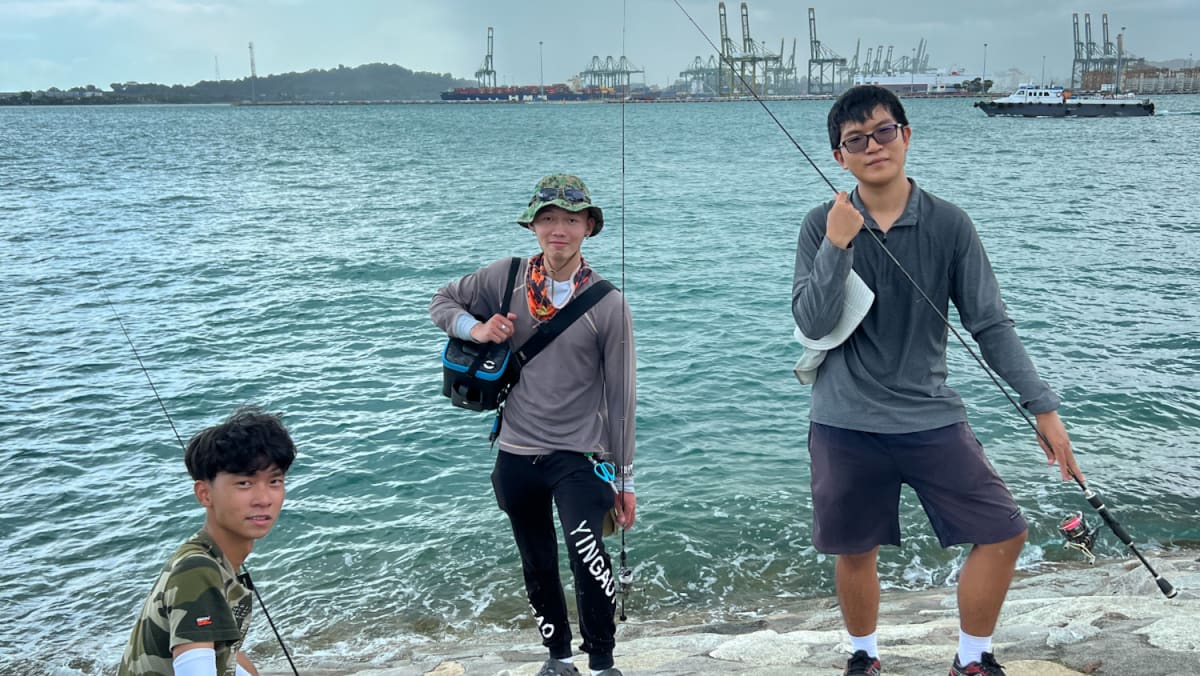
SINGAPORE — Visitors to Marina South Pier or Bedok Jetty at East Coast Park on a weekend may find themselves greeted with an unusual sight: Three young men fishing, photographing their catch at different angles, before releasing it back into the sea.
While many casual anglers fish for food, Aidan Raphael Keh, 17, Mr Lin Jiayuan, 21, and Mr Sim Jin Heng, 26, belong to a small community of “species hunters” in Singapore.
A niche group within the wider sport of fishing, species hunters prioritise catching a wide variety of fish species, over catching the biggest or most fish.
“We have more fish species in Singapore’s shores than even far larger countries like Great Britain because we are in close proximity to the Coral Triangle, and we are in a biodiversity hot spot,” said Mr Lin, a bioengineering student at the Nanyang Technological University.
The Coral Triangle is a global epicentre of marine biodiversity, encompassing six countries – Indonesia, Malaysia, Papua New Guinea, Philippines, Solomon Islands and Timor-Leste.
The trio estimates that there are fewer than 30 species hunters locally.
‘MUCH MORE TO DISCOVER’
The three anglers said that they release more than 90 per cent of their catch. All juvenile fish are also released.
They also ensure to practise “proper fish handling”, such as keeping the fish in water, or wetting their hands when handling them so as not to damage their protective slime coat.
While most fish are released after they are documented, a small proportion are either retained for personal consumption or donated to the Lee Kong Chian Natural History Museum for research purposes.
“Through this process of fishing for species, we actually do come by species that have not been recorded in Singapore for a while, or have entirely not been recorded in Singapore at all,” said Mr Lin.
When this happens, they connect with local ichthyologists to tell them about what they have caught.
The findings are sometimes published in Nature in Singapore – an online journal by the Lee Kong Chian Natural History Museum.
They may also be retained and contributed to the museum, where they are preserved as specimens.
“Sometimes we catch rare fish that the museum lacks specimens of, and we will donate it to them. Hopefully, it will help to further the understanding of Singapore’s piscine biodiversity as a whole, in our research scene in Singapore,” said Mr Lin.
One thing the anglers have noticed is that the marine habitats have changed over the years, which they believe could be attributed in part to dredging from land reclamation, thus affecting the different fish species found in Singapore’s waters.
As such, the trio hope that their donations could contribute to the long-term studies and documentation of local species. With formal documentation, they hope to also be able to observe trends in the fish populations over the years.
This would be especially helpful in the event that these native fish dwindle in population, or cease to be found in future.
Mr Lin added: “I will say that even if they don’t use it for research in the near future, even just the specimen being there is a great aid to Singapore’s biodiversity research, because it actually shows that the species has been found here.”
This had been an issue with some older records which lacked specimens, because it meant there was no way of confirming the species’ existence in Singapore’s waters, outside of the researchers’ written accounts.
The hobby is one the anglers foresee themselves being hooked on for a long time.
“I’ve always had an innate curiosity with marine life, specifically fish. And I don’t think I can ever reach a point where I’m complete, I don’t have any more questions, or I understand every single thing about them,” said Aidan.
“We are situated near the Coral Triangle and our diversity is unparalleled compared to other countries. So it’s kind of a waste to be here (in Singapore), and to not appreciate what cannot be found anywhere else.”
And while the trio have each caught more than 300 species of fishes to date, Mr Lin said: “There is much more for us to discover, and it is all part of this hobby that we are unlikely to give up at all.”